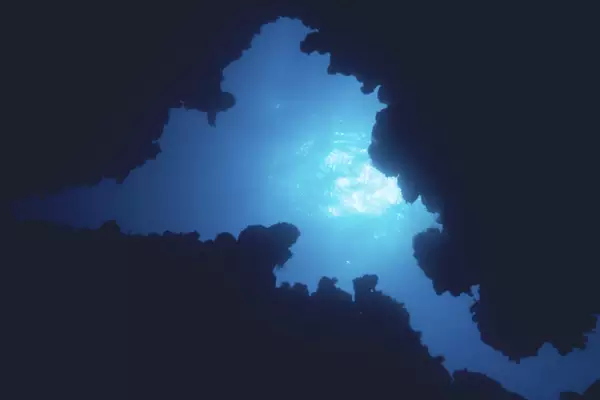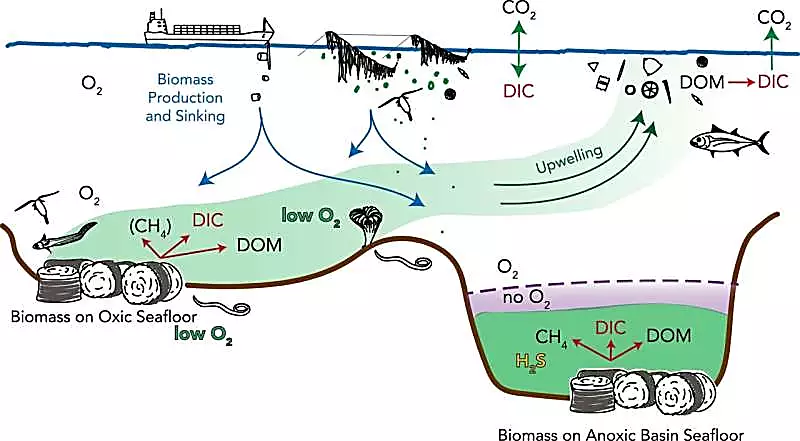Anoxic marine basins have been identified as potential sites for large-scale carbon sequestration in the deep ocean with minimal impact on marine life.
About the Anoxic marine basins:
- Anoxic marine basins, identified as potential sites for large-scale carbon sequestration in the deep ocean with minimal impact on marine life, are deep, oxygen-free zones on the seafloor, often with stagnant water for millennia. Examples include the Black Sea, Cariaco Basin, and Orca Basin.
- These basins are isolated from oxygen-supplying currents due to their geology, rendering them inhospitable for animal life but home to microbes and specialized fungi that thrive in such environments without oxygen.
- Inhabitants of these zones, primarily anaerobes, utilize molecules like nitrate for respiration and derive carbon from CO2 and CH4, unlike organisms in oxygen-rich areas that consume organic matter particles.
- Permanent anoxic basins are formed by strong water column layering due to density differences, created in cup-like depressions on the ocean floor, leading to minimal circulation with the open ocean and oxygen consumption by micro-organisms.
- These areas also contain toxic chemicals like sulphides or methane, either from geothermal activities or microbial life, and feature geological formations such as salt domes and mud volcanoes, where methane and other gases can cause mini-eruptions of sediment-filled water.
Ref: Source
| UPSC IAS Preparation Resources | |
| Current Affairs Analysis | Topperspedia |
| GS Shots | Simply Explained |
| Daily Flash Cards | Daily Quiz |





